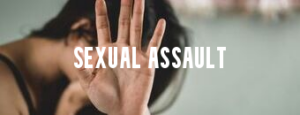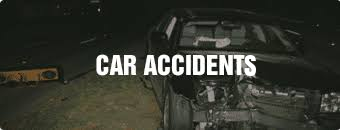- Our Firm
- Personal Injury
-
-
-
Personal Injury Lawyers
-
-
-
-
-
-
Injured in an accident? At Diamond & Diamond, our team of lawyers rely on their reputation in the field and extensive experience in personal injury to provide clients with a dedicated support system over the duration of their case.
-
-
-
-
-
HAVE YOU RECENTLY BEEN INJURED IN AN ACCIDENT?
-
-
-
- Corporate
- Class Action
What You Need To Know About a Herniated Disk Injury
#AskKevinButler
The pain you feel in your back after a car accident or following a slip and fall on a wet floor could be nothing more than your muscles reacting to the strain you placed on them. It could, however, be a serious injury to one or more of the disks located between the vertebrae that make up the spine. Herniated disk injuries can be debilitating with severe pain and numbness in the affected area and in the extremities. The pain can be so intense that engaging in your normal daily activities might be impossible. Proper diagnosis and treatment is essential to alleviate the pain and suffering from a herniated disk injury.
The function of disks in the spine
Your spine is composed of vertebrae or bones stacked atop one another. Holding each vertebra in place and preventing it from rubbing against the ones above and below it are disks filled with a gelatin-like substance. Each disk is, in effect, a shock absorber protecting each vertebra.
As people age, the wear and tear they place on their spine may cause the disks to weaken and lose their ability to cushion movement of the vertebrae. Sudden trauma, as might occur in a car accident, a fall or being hit in the back by another person, can cause one or more disks in the back to rupture or herniate. Leakage of the gelatin-like material into the spine may put pressure on nearby nerves.
Difference between a bulging disk and a herniated disk
An injury might cause damage to a disk allowing its outer surface to expand or bulge beyond the vertebra it protects. The gelatinous material remains contained in the case of a bulging disk, but the expansion of the disk can cause pain and discomfort either from coming in contact with nearby nerves or by inflammation in the area.
On the other hand, a herniation or rupturing of a disk allows its gelatinous material to protrude into the surrounding area. This protrusion can compress nerves in the area. The numbness some people with a herniated disk feel in a leg could be the result of the compression of a nerve in the lower back radiating down the extremity.
How is a herniated disk diagnosed?
A doctor with a patient complaining of back pain will conduct a physical examination after obtain a medical history from the patient and inquiring about any recent or past accidents or injuries to the affected area. The doctor probably will order an X-ray, CT scan or MRI to aid in diagnosing the cause of the person’s complaints.
Treatment for a herniated disk
The usual course of treatment for someone with a herniated disk is to allow the injury to heal on its own. Maintaining muscle strength through walking and other activities is important to avoid worsening the condition. Doctors usually recommend physical therapy with exercises designed to strengthen the back.
Surgery for a herniated disk is usually reserved as a last resort where the injury does not heal on its own over time. There are new treatments being studied, including the use of ozone injected into the disk, which could prove effective in helping patients to avoid surgery.
Ontario personal injury lawyers can help
The personal injury lawyers at Diamond and Diamond have years of experience successfully handling claims for compensation for individuals suffering injuries in slip and fall and car accidents caused by the negligence of others. If you have a herniated disk due to an accident, you could have a claim for compensation. Call the Diamond and Diamond 24/7 injury hotline at 1-800-567-HURT or visit their website to speak to someone now. They offer free consultations and case evaluations to injury victims throughout Ontario.
Need a Lawyer?
We are here 24/7 to address your case. You can speak with a lawyer to request a consultation.
1-800-567-HURTGet started with a free consultation
OUR TEAM
- Ishmeet Sandhu
- Nolan Bachmann
- Marissa Faulkner
- Annamarie Demaj
- Jeffrey Hum
- Tofunmi Adeyeye
- Alessia De Gasperis
- Amandeep Chawla
- Jeremy Tsoi
- Kimiya Razin
- Bilal Hashimy
- Shir Zisckind
- Gray Sinden
- Shelly Bard
- Christian Brown
- Daly Canie
- Tanveer Sohal
- Prianka Virdi
- Noah Brownstone
- Justin Kaminker
- Harinder S. Bhatti
- Craig Yargeau
- Kiran Birk
- Amit Singh
- Andrei Teju
- Maria Zahid
- Matthew Douglas
- Jacob Elyk
- Harry Gill
- Kristina Olivo
- Egi Bano
- Cam Woolley
- Charles Thompson
- Alexandra McCallum
- John Sime
- Allan Cocunato
- Patrick Poupore
- Erika Henderson
- Marina Korshunova
- Brandon Handelman
- Regeena Alapat
- Ryna Kim
- Natalia Poliakova
- Isaac Zisckind
- Manpreet Bhogal
- Mathura Santhirasegaram
- Nikolai Singh
- Sandra Zisckind
- Jeremy Diamond
- Michael Blois
- Darryl Singer
- Nadia Condotta
- Tinashe Madzingo
- Megan Armstrong
- Veronica D’Angelo
- Corey J. Sax
- Scott Tottle
- Steven Wilder
- TJ Gogna
- Jillian Carrington
- Joshua Himel
- Simon Diamond
- Cory Rubin
- Simon Mariani
- Brandon Greenwood
- Basil Bansal
- Nastassia Ivanova
- Tania Fleming
- George Laloshi
- Patrycja Majchrowicz
- Diana Iakossavas
- Dior Africa
- Alex Ragozzino
- Liana Saccucci
- Richard J. Chang
Head Offices
Main Offices
Barrie
Main Office
168 Bayfield Street
Calgary
Main Office
1331 Macleod Trail SE, Suite 645
Edmonton
Head Office
4246 97 Street NW, Unit 103
Halifax
Consultation Office
1701 Hollis St
London
Main Office
256 Pall Mall St, Suite 102
Oshawa
Consultation Office
50 Richmond Street E, Unit # 108 B
Ottawa
Main Office
955 Green Valley Crescent, Unit 315
Sudbury
Main Office
31 Larch Street, Unit 300
Timmins
Main Office
120 Cedar Street South, Unit 002A
Toronto
Head Office
255 Consumers Road, 5th Floor
Vancouver
Head Office
1727 West Broadway, Suite 400
Windsor
Main Office
13158 Tecumseh Rd. E. Unit 3B
Additional Areas Served
Ontario
- Ajax
- Alberta
- Aurora
- Barrie
- Belleville
- Bowmanville
- Brampton
- Brantford
- Brockville
- Bracebridge
- Bradford
- Burlington
- Burnaby
- Calgary
- Chatham
- Cobourg
- Collingwood
- Cornwall
- Durham
- Edmonton
- Elliot Lake
- Etobicoke
- Georgetown
- Guelph
- Hamilton
- Huntsville
- Kanata
- Kelowna
- Kingston
- Kitchener
- Leamington
- London
- Markham
- Milton
- Mississauga
- Muskoka
- Niagara Falls
- Newcastle
- Newmarket
- North Bay
- North York
- Oakville
- Orangeville
- Orillia
- Oshawa
- Ottawa
- Owen Sound
- Parry Sound
- Perth
- Peterborough
- Pickering
- Prince Edward County
- Richmond
- Richmond Hill
- Sault Ste Marie
- Sarnia
- Scarborough
- St. Catharines
- St. Thomas
- Stouffville
- Sudbury
- Surrey
- Thunder Bay
- Timmins
- Toronto
- Uxbridge
- Vancouver
- Wallaceburg
- Waterloo
- Welland
- Whitby
- Windsor
- Woodstock













